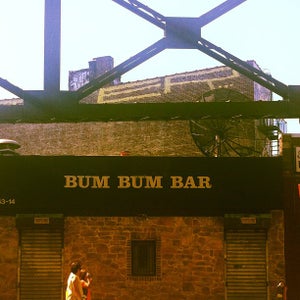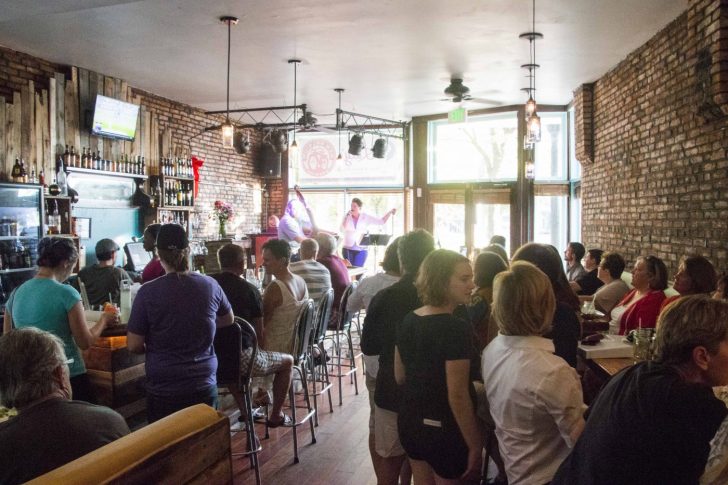With it being Pride Month and all, I started to wonder about the state of the Dyke March this year. And that got me thinking about what is now called the Pittsburgh's Dyke and Trans March, a topic I posted on
back in 2014.
Just how is this great expression of solidarity working out these days? You know, the parade where all of us who are "non-manly men" (you know, anybody who isn't a conventional masculine "cis" male) are supposedly diverted, so as to not muss up the "real" Pride events?
Well, there's a
Facebook page. And what do you know. It's held in September now. Why I don't know. You'll have to ask them.
And even though we're told that numerically, lesbians outnumber trans people, you would know it by the postings. There are lots of postings for trans events/issues, one for bi visibility, a few general, all-purpose "queer" ones.
Where are the postings related to dykes and lesbians? Well, I scrolled all the say to December 2017, and didn't FIND ONE posting that used either word.
Huh. So much for equal visibility. But really, we knew that, right? It was always about cooping an event started for lesbians by lesbians and eliminating the same. At least as anything other than the "supportive" and basically deferential role you often see in...
Well, I hate to say it. The Men's Rights Movement. A movement I spent years studying and writing about as an advocate for victims of domestic violence.
Far fetched you say?
I went back and looked at some of the postings of their main propagandist, someone named Sue.
Sue often makes a big to do about "the media" in rural Pennsylvania "misgendering" various transgender "victims" of law enforcement, and how they don't follow best practices.
The same blogger absolutely ignores best practices for covering domestic violence though - when it involves transgender persons being violent and abusive in their interactions with women within their families.
In fact, she actively covers up any history of domestic violence or violence directed towards women when it suits her purposes.
Let's explore further.
Here is
one set one of suggestions on how to cover domestic violence:
QUESTIONS TO CONSIDER WHEN COVERING A DOMESTIC VIOLENCE STORY
1) Have there been prior incidents? Acts of violence are often portrayed as an isolated incidents when, in reality, they are part of a pattern of conduct. Particularly if family members express surprise at the attack, it is easy to slip into a suggestion that the person just “snapped” or had an uncharacteristic lapse of control. A more accurate and complete story will result if prior conduct is also reported. Look for a history of controlling behavior. Review court records for prior criminal, divorce, child custody, parental rights and Temporary Protection Order (TPO) cases. Check law enforcement records for prior arrests and police response to allegations of domestic violence involving the same persons or address.
2) Who can speak for the victim? An abuser’s justification for violence commonly involves blaming the victim or the “system.” The victim and the “system” may not be free to dispute the abuser’s allegations because of fear, or because of physical or legal constraints. Presentation solely of the abuser’s point of view implies that the abuser’s violence was justified or motivated by the behavior of someone else.
3) Why did this happen? Warning signs of domestic violence are understood. Victims can be protected. Abuse is a learned behavior. Any implication that the crime was inexplicable is likely incorrect. Contact an expert to give you insight.
4) What’s the true portrait? It is incorrect to imply that “normal” or successful people aren’t typical perpetrators of domestic violence. In fact, domestic abusers often present two images: skillful in social and business settings but controlling and obsessive in intimate relationships.
5) What language should describe domestic violence? It is good practice to use the term “domestic violence” in describing the crime. Give the public a vocabulary with which to identify a social issue. The United States and most of its communities have been engaged in a massive effort for more than three decades to provide resources to address the societal problem of domestic violence. Acknowledge the existence of that effort and the availability of those resources by correctly labeling the conduct you are reporting.
6) Are authoritative points of view available? Seek a statement from, or consult with, a local domestic violence advocate or a recognized domestic violence expert.
7) How much do friends and neighbors really know? Use statements from associates of the abuser with caution. Domestic violence is often unknown to friends and neighbors until it becomes murder. Balance statements that express surprise at the abuser’s conduct with any record of past controlling behavior and information about domestic violence.
8) Were they separating? Was she pregnant? Domestic violence often is worst when the victim tries to separate or during pregnancy because the abuser’s control of the victim’s behavior is threatened.
9) Where can more contextual information be obtained? Information from this media guide may be used to add context and depth to a story about domestic violence.
10) What is the impact beyond this victim? Experts can help describe the impact of the domestic violence on children, families, employers, the community and the larger society.
11) How can victims get help? Include local contact information for domestic violence services. Many victims are unaware of the available support and, except through your reporting, may by unable to safely access this information.
12) How can abusers get help? One way to help prevent future domestic violence is by providing information to allow present and potential abusers to identify themselves, to understand that change is possible and to seek help to change their behaviors.
13) Can a story make things worse? Reporters should be aware that abusers use news reports to threaten their victims with similar fates or to reinforce the belief that, like the victim in the reporter’s story, the victim will be humiliated and not believed. Reporters can reduce the likelihood of this perversion of their reporting by following these suggestions.
So how does Sue absolutely violate these suggestions, in a way that actually suggests men's rights coverage?
Here is one story. Later, I may post about another case of Sue wrote about. It involves covering up the domestic violence history of a workforce shooter, a trans woman named Claire McClimans. Not to mention deliberate playing down of the shooting victim's injuries, and insinuating the victim deserved to be shot because he was supposedly insensitive to the shooter's wishes.
STORY ONE: SEAN HAKES
Sean Hakes was a transgender man shot and killed by the police in Sharon, PA (Mercer County) in January 2017.
Here's
what she said about it:
Sean Hake reportedly lived with his mother in the residence. Details are very limited at this time, but I will follow this story. We don’t know Sean’s role in the domestic call or what led up to his death by shooting. We certainly do know that the death of a 23-year-old is terrible and tragic.
And then she goes into how awful the coverage was for HIM in terms of inconsistent pronoun use and so forth.
Well, we live in the age of Google so it's not that hard to find out Sean's mysterious role in this domestic call.
Here's what
Penn Live said:
A domestic disturbance at a Sharon, Pa., home ended with a 23-year-old being fatally shot by police on Friday, the Associated Press reports.
According to the wire service, the mother of Sean Marie Hake called 911 shortly before midnight Friday to report an assault at their Sharon residence.
According to investigators, Hake threatened to put a razor blade to his mother’s throat and repeatedly refused police orders to put down a utility knife he was holding after he got out of his car. He was shot three times by a police officer when he began to move toward one of the officers, still holding the knife.
And this from WFMJ:
The district attorney says when Sharon police responded to a domestic disturbance call made by Hakes' mother on January 6th, they found Hake in a car, a utility knife in his hand and blood dripping from his wrist.
Police, who responded to the area of the 23-year-old's Tamplin Street home, said they tried to talk calmly to him, but he refused to put the knife down and exited the car and aggressively charged towards officers.
"Hake stated that you are going to have to kill me or I am going to kill you," said District Attorney Karson.
One of three officers, for at least the third time according to authorities, yelled at Hake to drop the weapon and again he refused and continued to advance towards the officers. That's when he was shot twice. Hake continued to advance towards police still holding the knife according to the district attorney and that's when one of the officers fired a third shot and Hake fell to the ground.
So how many rules were broken here?
Rule 1. Prior Incidents? Not only does Sue refuse to bring up prior incidents of domestic violence or research the same, she refuses to acknowledge the domestic violence incident behind this particular altercation with the police. It's as if Hakes is inexplicably shot by the police for no reason at all.
Rule 2. Who speaks for the victim? Sue refuses to acknowledge there was a victim other than Hakes. Doesn't own up to what Hakes did to his mother or even acknowledge the mother's name. But there is lots of blame for "the system" and the police and the media for "misgendering."
Rule 3. Why did this happen? Was there mental illness? Maybe. But violent abusers very often know what they are doing and do it anyway. At any rate, Sue doesn't express much interest in all that. Not when we can worry about the pronoun preferences of a person threatening people with a knife.
Rule 4. What's the true portrait? Sue is so committed to being an advocate for transgender persons that she covers up for a domestic abuser. So we get some idea that this is the same as some poor black kid shot by the police for simply walking the streets. That is not the case at all and it's highly misleading to suggest that it is.
Rule 5. What language? Well, Sue refuses to call this out as domestic violence at all. So there's that. So of course, why even bother with rule 6? That would just muddy the issue which is all about the shooting of a transgender man and media misgendering. So absolutely sweep under the rug the story of this person threatening to slash his mother's throat. And God knows what else she and others in the family have gone through. Apparently Sue can't even pretend to have compassion or interest in their plight. And so on for the rest of the rules.
This is what MRAs typically do--and media influenced by the same. It's all about the pain of the batterer. What a "good guy" he was. How he was "forced" to do what he did--though it's often vague what exactly forced him. How he--the violent one--is somehow the real victim. As for the real victims? Barely mentioned. Or erased altogether.
So are we surprised that dykes barely have a nominal existence in the Dyke and Trans March?
 Barone's Variety Room
Barone's Variety Room





















